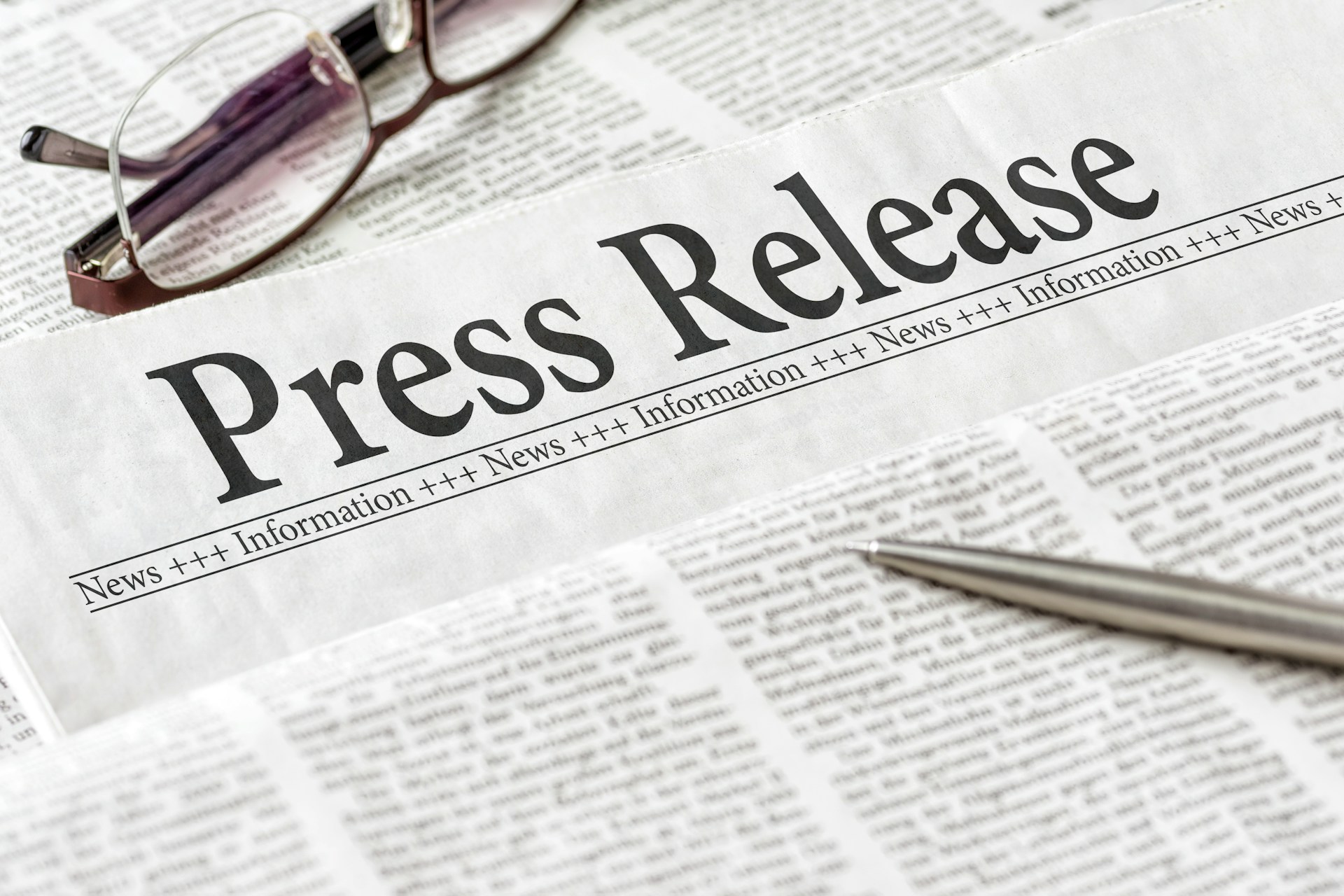After I published a recent article about how to decide if a press release should be written, I found myself in a few deeper discussions about the release itself. From these conversations I learned I have 2 more related articles ahead of me: Press release anatomy/history, and press release SEO/effectiveness. In order to understand press release SEO/effectiveness it’s important to first understand the history and anatomy of press releases, how they’ve evolved over the years, and how they haven’t evolved at all.
Content
Brief History of the Press Release
Press Releases Really Haven’t Changed Much
OK, OK! Yes, Press Releases have Changed a Little
Brief History of the Press Release
The first press release. The structure looks familiar, right?
PR history is filled with notable moments in time; many of them were powered by the press release. The first press release is credited to Ivy Lee: in 1906 his agency was working with the Pennsylvania Railroad at the time of an accident. Rather than waiting to see how journalists would cover the story he wrote up a release and proactively distributed it to journalists. The release told the story from the perspective of the railroad. The press release was born!
It is said that Edward Bernays, often referred to as the “the father of public relations,” took Ivy’s concept, refined it, and made it commonplace in PR.
Have a look at the image to the left: it’s Lee’s first press release as published in the New York Times. Look familiar?
Press Releases Really Haven’t Changed Much
Google search for press release anatomy
When I sat down to write this article, I started as I usually do -with research. First stop: Google. A search for “press release anatomy” resulted in a thrill and a little embarrassment.
I wanted to see if my premise (that press release anatomy hasn’t changed much) was accurate. What I found, ranked at #1 on Google, was a press release anatomy article I wrote for CafePress 10 years ago. Given the opportunity I would go back in time and re-write that article, or I’d go talk to Then-Marc to give him some advice on voice, structure and layout. But, the actual content of Then-Marc’s article remains accurate. The basic structural formula of a press release has not changed.
Press Release Anatomy
- Logo
- Headline: The most important element of a release, this should capture the readers attention and summarize your story.
- Sub-Headline: While not always necessary, this is your opportunity to build on the headline by adding secondary detail
- Dateline: City of origin and the date of release
- Lead Paragraph: Second only to headline, the lead paragraph needs to summarize tell your story and hook the reader.
- Body Paragraph/s: The next few paragraphs are your opportunity to add story details beyond the lead
- Quote/s: A quote is great when possible, preferable from C-level executives or industry experts. It’s your opportunity to have a person/voice validate the importance of your story
- Boilerplate: This section allows you to explain your organization in a few sentences and if appropriate add a few hyperlinks to your website, social media pages, etc.
- Contact Information: Make sure to include phone and email at minimum in case a journalist wants more info
OK, OK! Yes, Press Releases have Changed a Little
There are two major differences in press releases today by comparison to years ago: distribution and multimedia.
Press Release Distribution
Compared to 100 years ago, press releases are distributed quite differently, which of course makes perfect sense. To put it simply, distribution evolved along with technology. Its no surprise that with advances in communication technology the PR pro rolled with the times and shared releases with journalists in the ways that they’d be best received and most successful.
Tipp: Learn how to create a list of journalists and take a look at the best press release services in the UK.
Distribution history breakdown:
- Press releases in the early years = paper
- Press releases in the middle years = paper + wire service
- Press releases today = email +wire service + post on Website + social media
Press Release Additions Brought by Technology Advancements
Since today’s press release is a digital document, the PR pro has the opportunity to use today’s technology to better tell their story. Today’s press release often uses strategies to help stories get found by search engines, incorporate images, videos, and more.
4 multimedia press release elements to consider:
- SEO keywords: What keywords would your audience use to find this news? Once you answer that question make sure that keyword is included in the release headline and body. Of course press release SEO is MUCH more complicated than that, but this is a good start. I plan to write more on press release SEO in a future article.
- Video: People love video and they can be fantastic for offering more info on your story, or just making it more fun and interactive
- Photos: Second only to the video, people love anything that helps them better understand a story, photos are great for illustrating your message
- Links: Hyperlinks in a release, if inserted properly, can aid in SEO and drive traffic to your website
All in all, I find it amazing that – at their core – press releases have not changed all that much in over 100 years. The structure and their general purpose, getting your news to the public and journalists, has remained the same. Technology has helped press releases to evolve into a modern tool while still allowing them to maintain roots.
Up next, Press release effectiveness and SEO. Please comment if you have any input as I begin writing that story!
